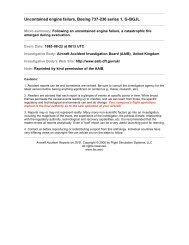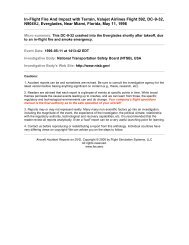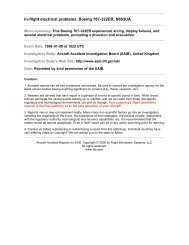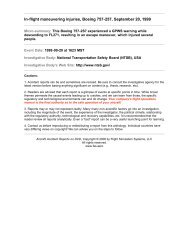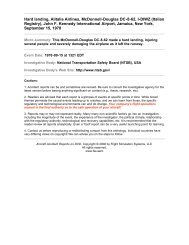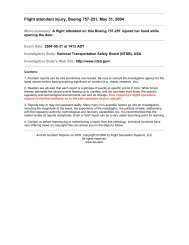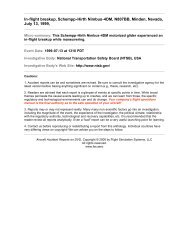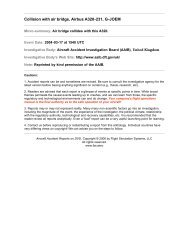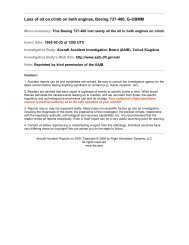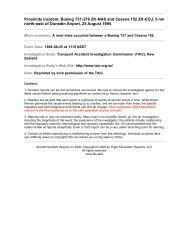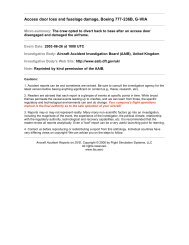Executive Summary - Fss.aero
Executive Summary - Fss.aero
Executive Summary - Fss.aero
You also want an ePaper? Increase the reach of your titles
YUMPU automatically turns print PDFs into web optimized ePapers that Google loves.
3.1 Findings<br />
Chapter 3<br />
Conclusions<br />
1. The<br />
captain held a physical certificate and a certificate of the aircraft rating issued<br />
by<br />
Civil Aeronautics Administration (CAA). The physical certificate showed no<br />
specific<br />
restrictions or any record of waiver. (1.5.1)<br />
2.<br />
According to the data of his heavy weight, age, hyper lipidemia and smoking habit<br />
cardiac<br />
patient. (1.13.3,1.13.4)<br />
3. The incapacitated pilot made no remarkable improvement to the suggestions<br />
of<br />
the physical examination doctors.(1.13.3)<br />
4.<br />
6.<br />
7.<br />
in his physical examination record, the pilot was grouping to a high potential<br />
There was no pilot’s recent medical history dated before his coming to work in<br />
Taiwan.<br />
5. The track cardiograph of the pilot physical examination record showed no<br />
symptoms of myocardial infarct. The Aviation Medical Center did not have to<br />
conduct the follow-ups in accordance with the Procedures of Physical<br />
Examination of CAA. (1.13.5,2.2.6)<br />
The pilot’s working hours, flying hours, and Rest time were totally in<br />
accordance with CAA laws. The flight crew who flew with the said pilot in one<br />
or two days before the incident said<br />
that he did not exhibit any irregularity at<br />
work. (1.5.2)<br />
The medication the captain carried with him showed no toxic ingredients or any<br />
cardiac-healing medicaments. (2.1.1)<br />
8.<br />
The cause of death of the pilot was coronary artery occlusion, i.e., a natural<br />
death. (2.1.2)<br />
52



